Physical Address
304 North Cardinal St.
Dorchester Center, MA 02124
Physical Address
304 North Cardinal St.
Dorchester Center, MA 02124

Discover proven winter RV driving techniques that protect your family and transform challenging snow conditions into safe travel adventures.
Winter RV adventures can transform familiar landscapes into breathtaking wonderlands, but they also present unique challenges you’ll need to master. You’re operating a large vehicle in conditions that test even experienced drivers, and there’s more at stake than a simple commute. Whether you’re heading to a snowy mountain resort or crossing state lines during the winter months, you’ll want to know the essential strategies that seasoned RV enthusiasts rely on to stay safe and comfortable on icy roads.
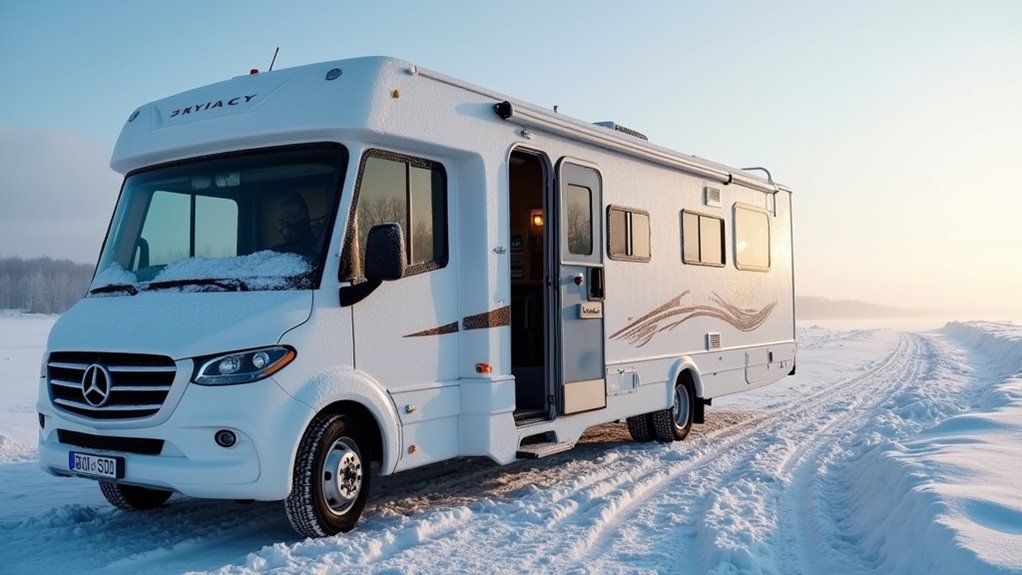
Before heading out in your RV during snowy conditions, completing a thorough pre-trip safety checklist can mean the difference between a successful journey and a dangerous situation.
Start by inspecting your tires for proper pressure and tread depth, as cold weather can considerably affect tire performance. Consider having tire chains ready for added traction in extreme winter conditions. Similar to windy conditions, maintaining a firm grip on the steering wheel helps you stay in control. Don’t forget to check your brake system’s effectiveness for handling your RV’s weight in slippery conditions.
Ensure all fluids are at recommended levels, and verify your battery is fully charged, since cold temperatures put extra strain on electrical systems.
Stock your RV with essential supplies: emergency roadside equipment, non-perishable food, water, warm blankets, and fully charged communication devices.
You’ll also want to fill up on propane for heating and cooking, plus top off your fuel tank before departure.
These basic precautions will help safeguard your winter RV adventure.
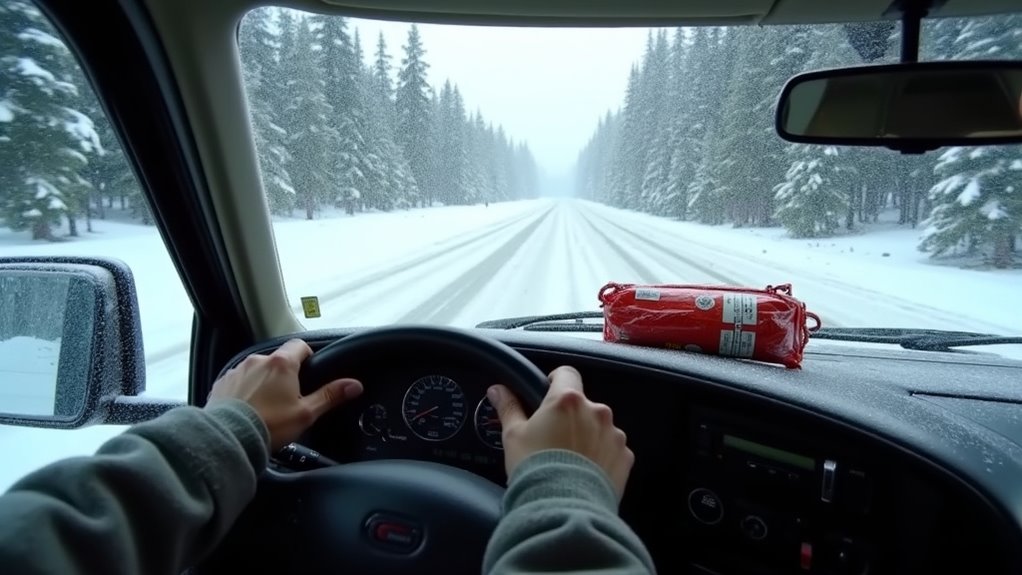
When traveling in your RV during winter, you’ll need specialized equipment to handle harsh weather conditions and guarantee your safety on the road. Your essential gear should include portable heaters, tank heaters, and insulated skirting to protect against freezing temperatures. Extra propane tanks are crucial since heating systems consume more fuel during cold weather.
Don’t forget to pack winter tires and tire chains for better traction on icy roads.
You’ll also want to equip your RV with safety devices like carbon monoxide detectors and emergency roadside kits. Keep protective gear handy, including waterproof clothing, warm bedding, and hand warmers.
For comfort and maintenance, pack insulated window covers, a dehumidifier to manage condensation, and snow removal tools. Remember to bring heated drinking water hoses to prevent your water supply from freezing, and install RV vent insulator cushions to retain warmth inside.
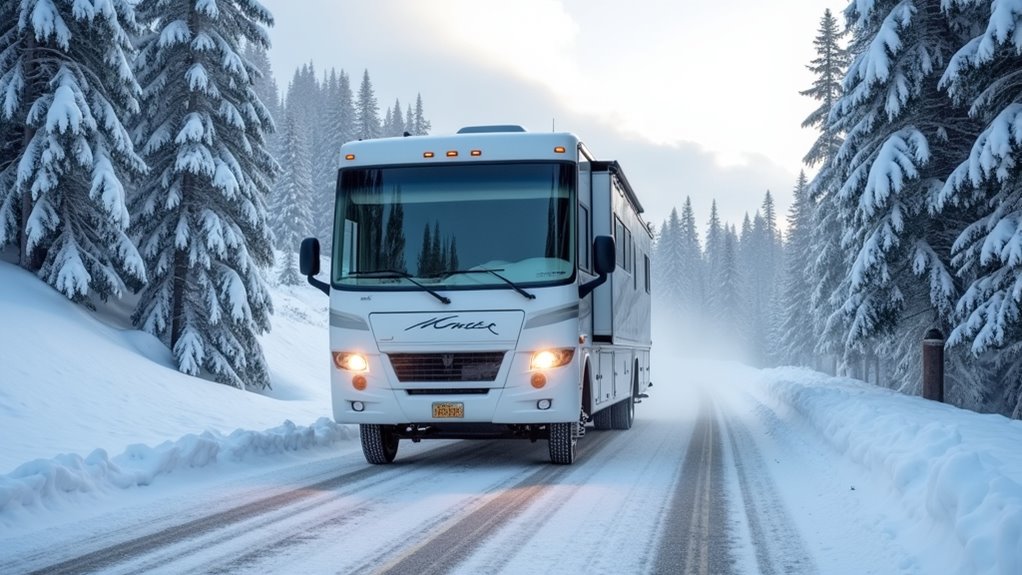
Having the right winter equipment sets the foundation for your snowy travels, but knowing how to drive your RV safely in these conditions is what truly matters.
When driving in snow and ice, you’ll need to reduce your speed considerably below posted limits and maintain a following distance of six to eight seconds from other vehicles. For most RVs with rear-wheel drive, handling can be particularly challenging in winter conditions.
Use engine braking by shifting to lower gears, especially when descending hills, and apply gentle, steady pressure on your brakes to prevent skidding.
As you navigate curves, slow down before entering them and maintain steady speeds throughout. Don’t make sudden movements – accelerate gradually, steer smoothly, and brake gently.
Remember that your RV’s size and weight require extra caution, so always adjust your driving based on current road conditions rather than posted speed limits.
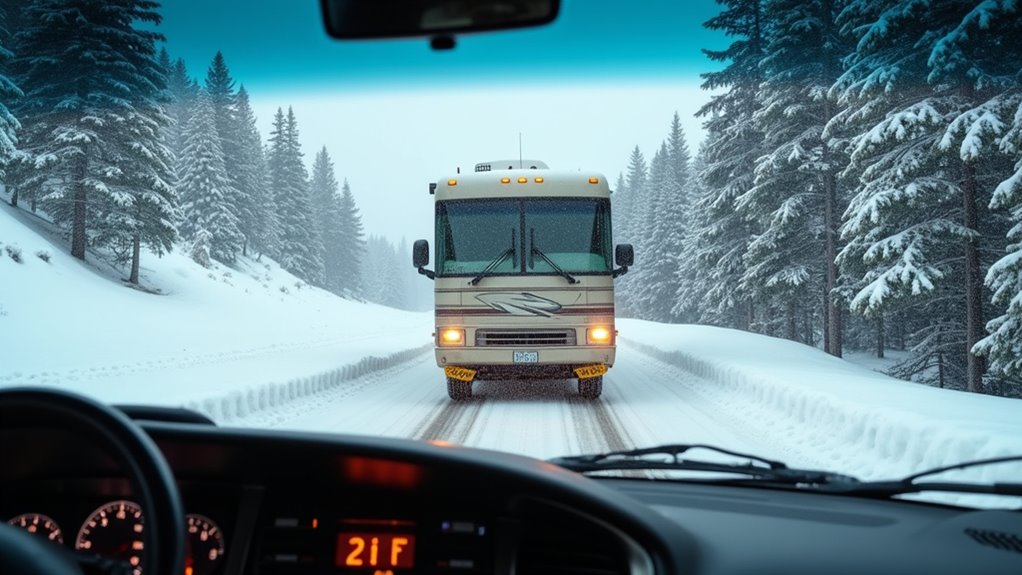
Since winter RV travel can present unexpected challenges, you’ll need to be thoroughly prepared for emergencies and potential hazards. Pack a detailed emergency kit and maintain a proactive approach to hazard management. Your safety depends on staying informed about weather conditions and having clear response procedures in place.
Identify nearby campgrounds with resources that can provide assistance during severe weather emergencies. Remember to test all safety equipment regularly and keep your RV’s maintenance up to date, particularly during winter travel.
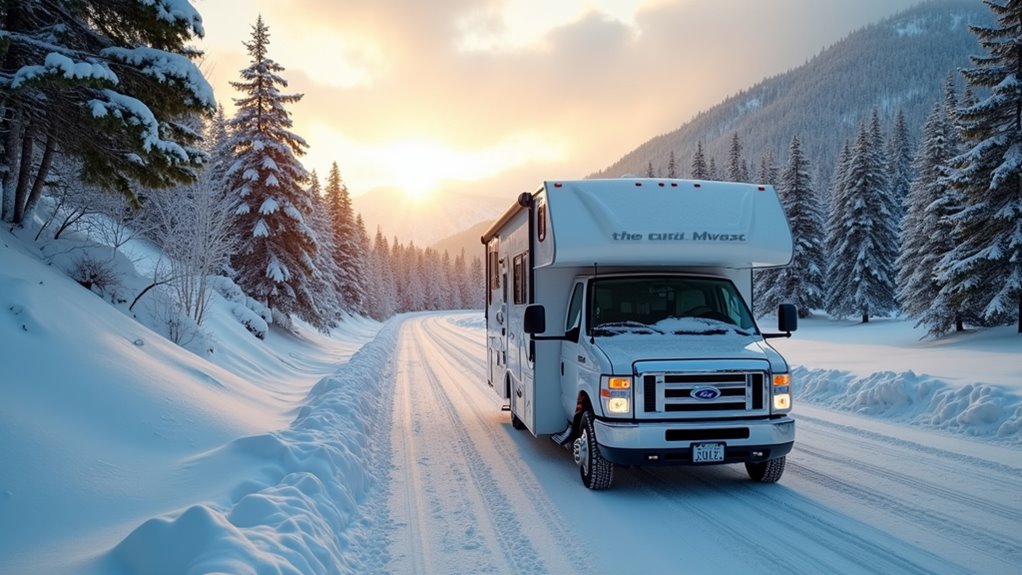
Strategic route planning builds upon your emergency preparedness by helping you avoid hazardous situations in the first place.
You’ll want to carefully select routes with minimal snowfall and fewer icy conditions while keeping a close eye on weather forecasts. Don’t forget to equip your RV with proper snow tires or chains for enhanced traction.
Make the most of modern technology by using GPS and mapping apps that provide real-time updates on traffic and road conditions. Weather apps can display detailed snowfall and wind speed maps to help you navigate safely.
Input your RV’s height and weight data to get customized routes that suit your vehicle’s specifications. You should also identify suitable rest stops along your planned route and remain flexible – be ready to adjust your course if weather conditions deteriorate.
Remember to prioritize daylight travel for better visibility and safer navigation.
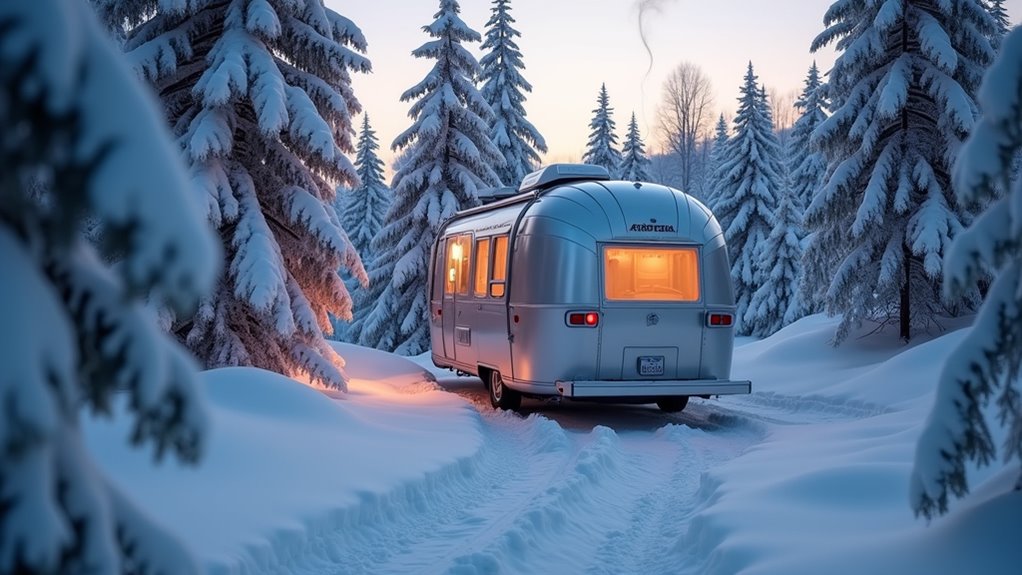
When setting up camp in snowy conditions, choosing the right location is essential for your RV’s stability and comfort. Park your RV facing the prevailing winds and look for natural windbreaks like trees or hills to minimize snow accumulation. Having multiple heat sources installed will ensure consistent warmth even in extreme conditions.
Smart RV winter camping starts with selecting a sheltered spot and positioning your vehicle to minimize drifting snow.
You’ll want to avoid low-lying areas where snowmelt can pool and create flooding issues.
Here’s what you’ll need to do once you’ve found your spot:
Remember to grade your parking spot slightly to allow proper drainage and maintain firm, level ground for stability.
When you’re heading out in your home-on-wheels during the frosty season, you’ll want to keep these winter wisdom nuggets close at hand. From being prepared with the right gear to choosing snow-friendly routes, you’re now equipped to handle whatever Mother Nature serves up. Remember, taking it slow and steady while staying weather-aware will help guarantee your winter wonderland adventure doesn’t become an unplanned extended stay.